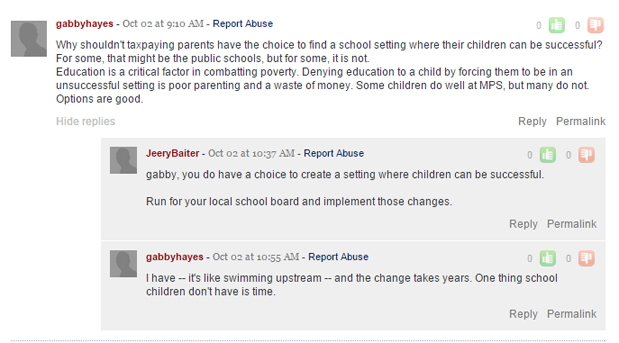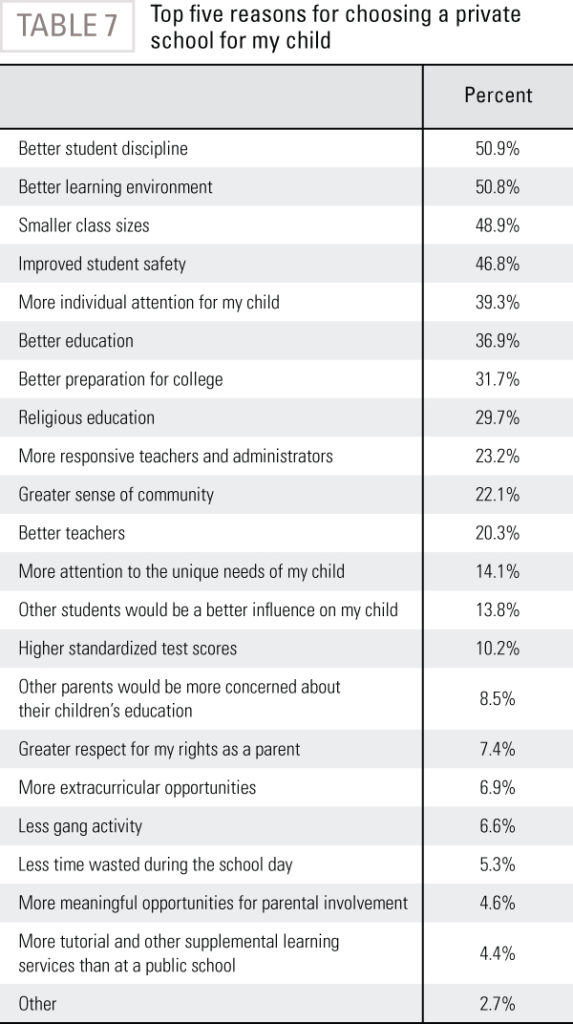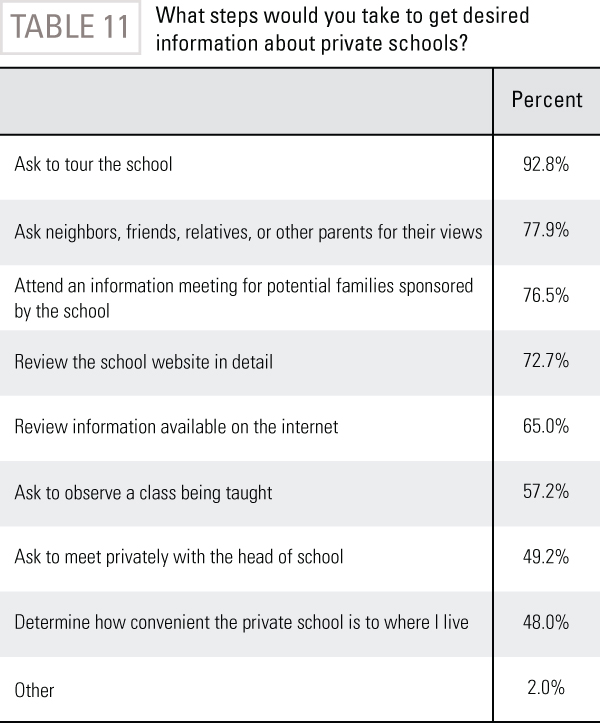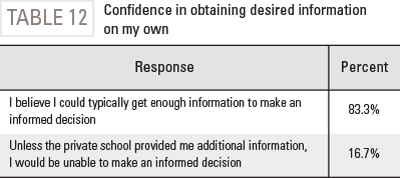Friday Freakout: Just Run for School Board if Your School Isn’t Working
Instead of a “Friday Freakout,” consider this a financial freakout over the Milwaukee Parental Choice Program—as this exchange was prompted by the Milwaukee Journal Sentinel’s “Study contends voucher program save money, benefit public schools”:

However, JeeryBaiter has a point, too. Parents can indeed run for school board to try to encourage change in the public school system.
So neither commenter is wrong, really. There are certainly parents who have the means, time, and interest in running for and being on a school board. Others, however, don’t.
If parents could take only JeeryBaiter’s preferred path, here is what they’d have to do:
1. Find anywhere from a minimum of $1,500 to—get ready—more than $128,000 to run for school board in Wisconsin. On the low-end, such funds likely would be hard to find for the 350,000 Wisconsin parents whose children qualify for free and reduced-price lunches. Middle-income households have their own challenges paying taxes, saving for college, and paying myriad other bills.
2. Peruse the 69-page election schedules, follow campaign finance requirements, and complete this:

4. Win.
And even if a parent were to win her school board race, there’s no guarantee her ideas would be adopted. After all, a proposal has to be presented, considered, and voted on—that itself presents a tremendous challenge, as the American Enterprise Institute’s Rick Hess noted:
First, as in the case of public utility regulation, critics have argued that a lack of attention and electoral involvement makes it difficult for the voters to hold their representatives even loosely accountable. Chester E. Finn Jr. and Lisa Graham Keegan have observed (2004, 15): “The traditional school board is no longer the embodiment of participatory democracy it was intended to be. The romantic notion that local school boards are elected by local citizens has been replaced with the reality that these elections are essentially rigged. They are held at odd times, when practically nobody votes except those with a special reason to do so. For example, in 2002, just 4 percent of registered voters in Dallas turned out to participate in July elections that replaced six school board members.” … Over half the public, including 57 percent of parents, admits not voting in the most recent school board election—a remarkably high rate given the tendency of respondents to overstate their electoral participation (Farkas et al. 2001, 15).
Such electorate neglect and subsequent special-interest control is what led New Jersey Gov. Chris Christie to move his state’s school board elections from the more obscure April to the general election in November, hoping to inspire greater public involvement.
But let’s say voter participation were greater in school board elections and meetings. And let’s also pretend someone like gabbyhayes were able to enter and win her school board race and, moreover, get her ideas for her child adopted in her school district. Does that mean those changes will work for every other child?
We suspect not, particularly when parents have different opinions on what their children need.
That is why school choice would be a less costly path for all parents—both in terms of financial costs and opportunity costs. With school choice, decisions over a child’s education are made parent by parent. And although it too requires means and time, it surely amounts to far less than what candidates must put in to a school board race.
Take Georgia’s parents who use the state’s tax-credit scholarship program to choose private schools for their children. Among parents surveyed by the Georgia GOAL Scholarship Program—57.3 percent of whom earn less than $60,000 a year—none of their “top five reasons for choosing a private school” came to an overwhelming consensus:

As the authors of the GOAL survey pointed out, parents know what steps to take and are prepared to take them:

The survey results indicated that parents who are considered to be disadvantaged are willing to take about as many affirmative steps to gain the necessary private school information as parents having higher incomes. Relevant findings include:
- Higher-income parents, college-educated parents, married parents, and white and Asian parents are slightly more likely to take more steps to gain the information they desire about schools, with higher-income parents indicating that, on average, they would take 5.3 of the eight positive steps to gain information, whereas low-income parents indicated they would take 4.8 steps.
- On average, college-educated parents indicated they would take 5.0 steps, whereas those with less than a college diploma indicated they would take 4.6 steps. Married, white and Asian parents indicated they would take 4.9 steps, whereas unmarried, nonwhite and non-Asian parents indicated they would take 4.8 steps.
- Suburban parents indicated they would take 5.0 steps, on average, whereas rural and urban parents indicated they would take “only” 4.7 steps.
- Perhaps because of the lack of adequate public and private school options in their neighborhoods relative to the neighborhoods in which higher-income families live, only 38 percent of lower-income parents would seek information about the convenience of the possible private schools as compared with 57.4 percent of higher-income parents.
Even better, those parents expressed confidence in getting their desired information:

But again, neither JeeryBaiter’s nor gabbyhayes’ ways for getting parents involved in education is wrong—just as Milwaukee Public Schools’ (MPS) per-student spending is not “wrong” compared with what vouchers cost in the Milwaukee Parental Choice Program (MPCP).
Some may prefer MPS funding and running for school board. Others might opt for MPCP voucher funds and researching their children’s schools.
School choice doesn’t cut corners. It’s a way to make our education system more flexible for the millions of families who can’t afford to wait any longer.




